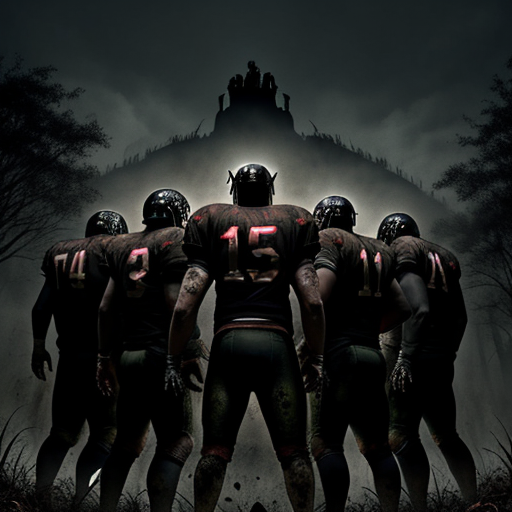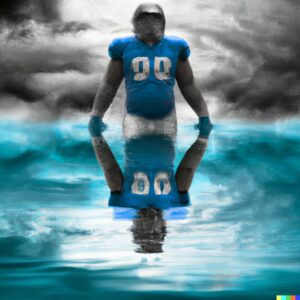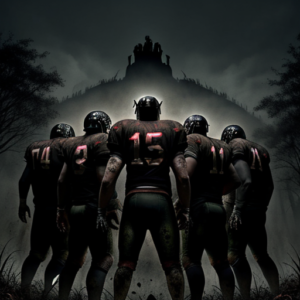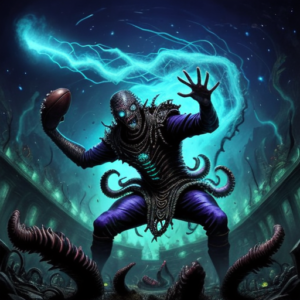Week Two of the NFL DFS season is upon us and we have some added clarity for team depth charts and target pecking order in most of the offenses on the board. A few key additions of talents who were missing last week, including Travis Kelce as a prime example, have been accounted for in adjusting expectations. The following groups are based both on the expectation of team utilization and our custom projections, with the goal of creating a pool of highly correlated high-ceiling lineups that include a variety of potential combinations. The recommended groups typically are focused on pass-catchers, but this week’s selections include a number of key running backs who are highly involved in their team’s passing games in addition to what they do on the ground. The groups should be utilized along with fairly heavy randomness and thinly sliced individual ownership distributions to create a truly diverse pool of combinations for later sorting or simulation.
This article focuses on building lineups with a quality foundation by utilizing the powerful Groups and Rules/Limits tools within the industry’s optimization tools. All of the concepts and pairings included below can be applied to hand-building as well. The goal is to create lineups that have high-scoring correlation and take advantage of combined outcomes within stacks while limiting the likelihood of building inefficient or negatively correlated entries for a full slate of NFL DFS lineups.
This video was made in a former life and features a detailed demonstration of how to apply these concepts in one leading optimizer tool: Fantasy Cruncher – How-To Video
Don’t miss the new Above/Below feature article for a few of our top picks.
Check out our full game-by-game breakdown from Saturday night right here:
Week 2 DraftKings & FanDuel NFL DFS Stacks & Optimizer Groups
Overview
Rules and limits are powerful tools for lineup creation for NFL DFS where our primary focus is creating highly correlated lineups via stacking players from the same game. Lineups will typically be coordinated around the quarterback selection, which informs at least one pass-catcher choice, establishes a budget, eliminates a defense, and sets the tone for the lineup. We will typically look to correlate a quarterback and at least one of his pass-catchers in every lineup, with most of those including a skill player from the opposing team who will have a chance to support the stack in a high-scoring game that drives offense on both sides to create additional correlated scoring potential. Stacking multiple pass-catchers in the same lineup is a sound approach as well, though there are typically overall ceilings on how much volume is available at any given position. We do not typically include running backs who are not pass-catchers as priorities in NFL DFS groups, they typically stand alone with the selection of the quarterback-based stack informing remaining salary which then informs the running back selections. High-volume backs and pass catchers out of the backfield can be included in the groups utilized below, but it is frequently not necessary to do so with the very best players, they arrive in lineups without help.
The following rules and limits are typically applied in an optimizer’s Advanced Options menu. Notes are included to elucidate the reasons behind each rule and to explain what it does during the lineup creation process. These settings can typically be saved for re-use, which is highly recommended. Saving the Week 1 groups that will be created below is also a very good idea to save time with updates instead of recreation each week. These groups are created manually, but most optimizers include automated group creators that can help accelerate the curation process.
DraftKings + FanDuel Settings & Advanced Options
Unique Players Per Lineup– This setting forces the optimizer to utilize at least X new players who were not in Lineup 1 when it creates Lineup 2, and so on. It is recommended to utilize at least two, and more can be applied depending on the degree of differentiation desired within lineups.
Team Salary– a minimum or maximum salary spend can be applied here as needed, though this is not a part of the recommended process in this space as leaving salary on the table is an easy path toward creating unique lineups while not necessarily making a negative expected value play.
FLEX position– allows restrictions on what positions can be rostered at the FLEX spot. The only position to consider in this case is tight end, but that is something to be restricted at the individual level via Groups, rather than at the global level.
Global Exposure Setting – allows caps on the maximum percentage of lineups a player can appear in within a given pool of lineup construction. This is a powerful tool for shaping lineups but if settings are too low attempts to build a full set will fall short due to a lack of available players, one of the most common errors in optimizer building. Most optimizers include the ability to calculate ownership caps continuously or at the end of the pool creation process. If caps are calculated continuously, a player with a 25% cap who is utilized in Lineup 1 will not be available for use again until Lineup 5 , we recommend turning OFF continuous calculation.
Randomness – provides a random multiplier to each player’s projected point total based on the set values. This is a valuable tool that helps differentiate lineups instead of simply creating them in order of highest median projected scores. Using some randomness for lineup generation is strongly recommended but the degree to which it is applied is down to personal preference, but 15-25% is fine to get started. We suggest heavier randomness to more event-based players like wide receivers while tracking volume-based positions like running backs more toward their median or ceiling projections.
DraftKings + FanDuel Team Stack Rules
This set of rules will force optimizers to build lineups with certain combinations. We are looking to stack at least one skill player, almost always a pass-catcher, with his quarterback while also playing a skill player from the opposing team in the lineup. The theory behind this build is that a high-scoring stack will require some response from the opposing team to deliver a ceiling score in most situations. When that is not the case, the team that is winning will simply slow down and run out the clock. Most optimizers utilize a “complete the sentence” approach for rule creation with selections from drop-down menus following a very straightforward logic. Exceptions to these rules can be added for specific teams and players on most optimizer products.
- QB with at least one WR/TE from Same Team (note: It is fine to set this to two or to utilize two versions of this rule, one with WR/TE and one with RB/WR/TE, but we refine this via Groups)
- QB with at least one RB/WR/TE from the Opposing Team (we typically prefer the pass-catchers but high-volume running backs can be effective here)
- QB with at most zero DST from the Same Team (this is a personal preference; high-scoring teams and quarterbacks tend to leave their defenses on the field, exposing them to simple point-scoring negatives)
Limits & Custom Rules and Requirements
Limit rules can be applied to restrict certain combinations from coming together. This is powerful for limiting multiple running backs from the same team or getting overweight to a certain stack within a lineup.
- Limit QB/RB/WR/TE from Same Team to three
- Limit RB/WR/TE from the Same Team to one unless paired with QB from the Same Team OR the Opposing Team
- Limit RB from Same Team to one (we also do this with WR in a separate rule that adds an “unless paired with QB or opposing QB” but it’s a personal preference for NFL DFS, we typically do not want two pass-catchers from the same team without their quarterback)
We will maintain the list of rules and limits throughout the season, with occasional tweaks, if needed. Each week sees yet another fresh crop of value plays as situations change and injuries create opportunities around the league. These changing roles and emergent value plays are accounted for in the process of creating these groups from week to week. After a large pool of lineups is created utilizing these groups, it is still of critical importance to filter them for factors including ceiling projections and leverage potential. These groups should help ensure that a highly correlated premium set of options that rotates through a variety of combinations is utilized to create the full lineup pool.
Sunday Updates
Any changes and recommended boosts to specific players will be provided in an early morning update each Sunday.
NFL DFS Week 2 Features & FREE Projections
- Week 2 FanDuel & DraftKings Projections
- Week 2 Above/Below – Key Picks
- Week 2 Quarterback Scoring & Value Rankings
- Week 2 Running Back Scoring & Value Rankings
- Week 2 Pass-Catcher Scoring & Value Rankings
- Week 2 Defense Scoring & Value Rankings
Construction Concept
Team groups are built by utilizing the quarterback as the KEY player in group settings. The quarterback decision in each lineup is the driving factor in which stack is utilized in that lineup and which corresponding plays are then made to work within the structure and requirements. Built to specification, each team will have two groups, a team group, and an opponent group, both of which utilize the same quarterback as the key player. Each game will have a total of four groups. This is the best approach to truly capture the requirement of playing individual “run-back” plays from the opposing team. A more basic approach would be to include all of the skill players from a game in each quarterback’s group and rely on rules and limits to restrict any potential overflow. It is highly recommended to save the Week 1 groups as a foundation that will be updated for the rest of the season. The recommended groups will include skill players who have an active role in their offense and provide significant correlation with their quarterback’s scoring, quite often bell-cow running backs who do not specialize in the passing game will not be included in groups as they are projected highly and appear on their own in basically correct distributions, while also not always providing the strongest positive correlation plays. Stacking quarterbacks with pass-catchers and allowing running backs to fall into the lanes then created by settings, available salary, and randomness should create a well-distributed set of quality lineups. These groups are updated weekly to account for changes in utilization, schemes, injuries, target shares, and more.
Team Groups for DraftKings & FanDuel – Week 2
The goal is to create a large pool of well-built lineups that can be utilized in any large-field GPP contest. Our approach is to build far more lineups than needed and utilize a sorting table or sim process to filter to the best set of lineups for entries. The lineups created in these crunches should provide a broad distribution that includes some of the lower-owned high-upside skill players from each stack. Applying boosts is critical in pushing and pulling ownership on individual players within their team’s stacked lineups if they are appearing too much or too little.
The groups below are designed so that each quarterback will have two groups to create, one with his skill players and another with the opposing team. A more basic approach would be to add them all to one large group with an “at least three” and let rules and limits set things, but there is a more granular level of control in creating them separately.
Utilizing two groups also allows us to place running backs into the “run-back” position in certain teams while not including them in the primary stack for their team. This is useful when there is a situation with an extremely highly projected running back who does not necessarily fit into his team’s passing game. These players are threaded throughout the following construction recommendations.
Note for the Rotogrinders optimizer, we recommend trimming the automatically created groups that can be accessed under Team Groups, Opponent Groups, and Max Position Groups to match these groups for lineup building. We typically utilize the Stacks tab to enforce constructions as well, but a key requirement is missed in the automated groups. The Max Position groups need the manual addition of the running backs and tight ends to the group that is created with the wide receivers with a setting of max 1 and the team’s quarterback selected as a key player with the designation of using that group when the quarterback is NOT in the lineup. This is done to eliminate the possibility of three skill players from the same team appearing at running back, tight end, and wide receiver together without their quarterback involved. A simple limit of three players per team will keep things to just a quarterback with two skill players in stacks after that.
Arizona Cardinals
Key Player: Joshua Dobbs
Setting: exactly one
Team Group: James Conner, Marquise Brown, Rondale Moore, Zach Ertz, Michael Wilson, Trey McBride
Opposing Setting: exactly one
Opposing Group: Saquon Barkley, Darren Waller, Isiah Hodgins, Darius Slayton, Parris Campbell, Jalin Hyatt
Atlanta Falcons
Key Player: Desmond Ridder
Setting: exactly one
Team Group: Bijan Robinson, Drake London, Kyle Pitts, Mack Hollins
Opposing Setting: exactly one
Opposing Group: AJ Dillon, Romeo Doubs, Jayden Reed, Luke Musgrave
Baltimore Ravens
notes: these combinations come together with naturally even distributions in our lineup builds without alteration. Superstar quarterback Lamar Jackson is playable without a supporting cast but stacking remains the preferred approach.
Key Player: Lamar Jackson
Setting: at least one
Team Group: Zay Flowers, Mark Andrews, Odell Beckham Jr., Rashod Bateman
Opposing Setting: exactly one
Opposing Group: Joe Mixon, Ja’Marr Chase, Tee Higgins, Tyler Boyd, Irv Smith Jr.
Buffalo Bills
notes: Knox and Harty can each get a bit of a bump in groups to appear a bit more frequently in Allen/Bills stacks
Key Player: Josh Allen
Setting: at least one
Team Group: Stefon Diggs, James Cook, Gabe Davis, Dalton Kincaid, Dawson Knox, Deonte Harty
Opposing Setting: exactly one
Opposing Group: Davante Adams, Josh Jacobs, DeAndre Carter
Chicago Bears
notes: a minor down-dump to Cole Kmet may be in order, he appears as the most frequently connected pass-catcher with Fields in our FanDuel builds.
Key Player: Justin Fields
Setting: at least one
Team Group: Khalil Herbert, DJ Moore, Darnell Mooney, Cole Kmet, Chase Claypool
Opposing Setting: at least one
Opposing Group: Mike Evans, Chris Godwin, Cade Otton, Trey Palmer, Deven Thompkins
Cincinnati Bengals
notes: if you want shares of Tyler Boyd in Burrow stacks he will need a bump, Boyd was coming up less frequently than Mixon, Chase, Higgins, and Smith in locked Burrow lineups.
Key Player: Joe Burrow
Setting: at least one
Team Group: Joe Mixon, Ja’Marr Chase, Tee Higgins, Tyler Boyd, Irv Smith Jr.
Opposing Setting: at least one
Opposing Group: Zay Flowers, Mark Andrews, Odell Beckham Jr., Rashod Bateman
Dallas Cowboys
notes: Michael Gallup can get a bit of an upward nudge for a few additional shares. Garrett Wilson is easily the primary run-back option from the Jets’ passing game.
Key Player: Dak Prescott
Setting: at least one
Team Group: Tony Pollard, CeeDee Lamb, Jake Ferguson, Michael Gallup, KaVontae Turpin
Opposing Setting: at least one
Opposing Group: Garrett Wilson, Breece Hall, Dalvin Cook, Allen Lazard, Randall Cobb, Tyler Conklin
Denver Broncos
notes: Courtland Sutton and Marvin Mims Jr. can get minor bumps for a few additional shares if they are not landing in combinations frequently enough.
Key Player: Russell Wilson
Setting: at least one
Team Group: Jerry Jeudy, Courtland Sutton, Javonte Williams, Marvin Mims Jr., Samaje Perine, Adam Trautman, Lil’Jordan Humphrey (large field)
Opposing Setting: exactly one
Opposing Group: Brian Robinson Jr., Terry McLaurin, Jahan Dotson, Curtis Samuel, Logan Thomas
Detroit Lions
notes: Sam LaPorta comes up slightly too much and Amon-Ra St. Brown slightly too little for us, nudge according to preference.
Key Player: Jared Goff
Setting: exactly one
Team Group: Amon-Ra St. Brown, Sam LaPorta, Marvin Jones Jr., Josh Reynolds, Kalif Raymond, Brock Wright (large field)
Opposing Setting: exactly one
Opposing Group: DK Metcalf, Tyler Lockett, Jaxon Smith-Njigba
Green Bay Packers
notes: with Christian Watson and Aaron Jones out we will give bumps to Romeo Doubs and Rayden Reed to balance constructions, AJ Dillon and Luke Musgrave appear the most naturally in stacks with Love.
Key Player: Jordan Love
Setting: exactly one
Team Group: AJ Dillon, Romeo Doubs, Jayden Reed, Luke Musgrave, Samori Toure
Opposing Setting: at least one
Opposing Group: Bijan Robinson, Drake London, Kyle Pitts, Mack Hollins
Houston Texans
Key Player: CJ Stroud
Setting: exactly one
Team Group: Nico Collins, Dalton Schultz, Robert Woods, John Metchie II, Tank Dell
Opposing Setting: exactly one
Opposing Group: Michael Pittman Jr., Deon Jackson, Alec Pierce, Josh Downs, Kylen Granson
Indianapolis Colts
notes: our builds are getting a lot of Granson in Richardson groups, he could use a minor down-bump or a minor nudge upward to the wide receivers would also work.
Key Player: Anthony Richardson
Setting: at least one
Team Group: Michael Pittman Jr., Deon Jackson, Alec Pierce, Josh Downs, Kylen Granson
Opposing Setting: at least one
Opposing Group: Nico Collins, Dalton Schultz, Robert Woods, John Metchie II, Tank Dell
Jacksonville Jaguars
notes: our projections will deliver a bit more Christian Kirk than Zay Jones in stacks with Lawrence, Ridley will be the highest owned, and shares will be fairly evenly distributed with Engram and Etienne included as well. A minor bump to Jones can level his shares with Kirk’s.
Key Player: Trevor Lawrence
Setting: at least one
Team Group: Calvin Ridley, Travis Etienne, Christian Kirk, Zay Jones, Evan Engram
Opposing Setting: exactly one
Opposing Group: Travis Kelce, Skyy Moore, Marquez Valdes-Scantling, Kadarius Toney, Rashee Rice, Justin Watson (large field)
Kansas City Chiefs
notes: Kelce will naturally be the most frequently paired player in Mahomes stacks, giving a nudge to get a few extra opportunities at Valdes-Scantling as a deep threat and Rashee Rice for a minor uptick in shares is how we are handling this group.
Key Player: Patrick Mahomes
Setting: at least one
Team Group: Travis Kelce, Skyy Moore, Marquez Valdes-Scantling, Kadarius Toney, Rashee Rice, Justin Watson (large field), Justyn Ross (large field)
Opposing Setting: exactly one
Opposing Group: Calvin Ridley, Travis Etienne, Christian Kirk, Zay Jones, Evan Engram
Las Vegas Raiders
Key Player: Jimmy Garoppolo
Setting: exactly one
Team Group: Davante Adams, Josh Jacobs, Austin Hooper, Deandre Carter, Michael Mayer
Opposing Setting: exactly one
Opposing Group: Stefon Diggs, James Cook, Gabe Davis, Dalton Kincaid, Dawson Knox, Deonte Harty
Los Angeles Chargers
notes: this stack picks up a fairly natural distribution of shares across 100 Herbert-locked lineups, bumps should not be required. Even shares of Hopkins and Henry will be run-back options.
Key Player: Justin Herbert
Setting: at least one
Team Group: Keenan Allen, Mike Williams, Quentin Johnston, Gerald Everett
Opposing Setting: at least one
Opposing Group: DeAndre Hopkins, Derrick Henry, Treylon Burks, Nick Westbrook-Ikhine, Chig Okonkwo
Los Angeles Rams
Key Player: Matthew Stafford
Setting: at least one
Team Group: Puka Nacua, Tutu Atwell, Tyler Higbee, Van Jefferson, Ben Skowronek (large field)
Opposing Setting: at least one
Opposing Group: Christian McCaffrey, Brandon Aiyuk, Deebo Samuel, George Kittle
New York Giants
notes: Jones stacks should come up fairly heavily favoring Barkley and Waller, with about half as much of each of the wide receivers, at most. James Conner, Marquise Brown, and Zach Ertz appear in appropriate shares as run-back options.
Key Player: Daniel Jones
Setting: at least one
Team Group: Saquon Barkley, Darren Waller, Isiah Hodgins, Darius Slayton, Parris Campbell, Jalin Hyatt, Daniel Bellinger, Sterling Shepard
Opposing Setting: exactly one
Opposing Group: James Conner, Marquise Brown, Rondale Moore, Zach Ertz
New York Jets
Key Player: Zach Wilson
Setting: exactly one
Team Group: Garrett Wilson, Allen Lazard, Randall Cobb, Tyler Conklin, Breece Hall, Dalvin Cook
Opposing Setting: exactly one
Opposing Group: Tony Pollard, CeeDee Lamb, Brandin Cooks, Jake Ferguson, Michael Gallup, KaVontae Turpin
Seattle Seahawks
notes: if he is included in the group, running back Kenneth Walker III comes up far too frequently for our tastes, at the expense of shares of the pass-catchers in stacks with Geno Smith.
Key Player: Geno Smith
Setting: at least one
Team Group: DK Metcalf, Tyler Lockett, Jaxon Smith-Njigba, Noah Fant, Will Dissly
Opposing Setting: at least one
Opposing Group: Amon-Ra St. Brown, Sam LaPorta, Marvin Jones Jr., Josh Reynolds, Kalif Raymond
San Francisco 49ers
notes: Purdy stacks see a fair distribution of shares between McCaffrey, Samuel, Kittle, and Aiyuk. Tyler Higbee and Puka Nacua are the two most common run-back options but additional shares are spread to both Atwell and Jefferson.
Key Player: Brock Purdy
Setting: at least one
Team Group: Christian McCaffrey, Brandon Aiyuk, Deebo Samuel, George Kittle
Opposing Setting: at least one
Opposing Group: Puka Nacua, Tutu Atwell, Tyler Higbee, Van Jefferson
Tampa Bay Buccaneers
notes: Trey Palmer and Deven Thompkins will need a minor nudge to get more involved in a pool of Mayfield stack lineups, which is primarily a large-field tournament play.
Key Player: Baker Mayfield
Setting: at least one
Team Group: Mike Evans, Chris Godwin, Cade Otton, Trey Palmer, Deven Thompkins
Opposing Setting: at least one
Opposing Group: Khalil Herbert, DJ Moore, Darnell Mooney, Cole Kmet, Chase Claypool
Tennessee Titans
Key Player: Ryan Tannehill
Setting: exactly one
Team Group: DeAndre Hopkins, Derrick Henry, Treylon Burks, Nick Westbrook-Ikhine, Chig Okonkwo
Opposing Setting: at least one
Opposing Group: Keenan Allen, Mike Williams, Quentin Johnston, Gerald Everett
Washington Commanders
Key Player: Sam Howell
Setting: at least one
Team Group: Brian Robinson Jr., Terry McLaurin, Jahan Dotson, Curtis Samuel, Logan Thomas
Opposing Setting: exactly one
Opposing Group: Jerry Jeudy, Courtland Sutton, Javonte Williams, Marvin Mims Jr., Samaje Perine, Adam Trautman
Follow Us on Twitter. Join us in Discord. Subscribe to the YouTube Channel.

